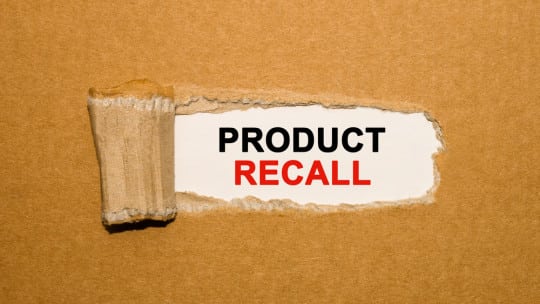

As a communications pro (and consumer) you likely have experienced a product recall. Recalls occur with such exhausting regularity that they are becoming lost on weary consumers, creating unacceptable safety and PR risks.
Recall fatigue—when consumers are so inundated with recall notifications that they tune out—is becoming a serious problem that can severely damage a brand’s reputation. In the case of certain automobile, food and drug recalls, ignoring a recall can have life-threatening consequences.
Countering recall fatigue often falls on the shoulders of PR and marketing pros tasked with getting out the word. With the plethora of recalls (2016’s total was a record), it can be difficult to get consumers whose antennae are muted to take action. Automobile-related recalls, for example, are particularly problematic. Consumer Reports says 113 million were recalled during the past couple of years, yet up to 25% of owners don’t respond, according to data from the National Highway Traffic Safety Administration (NHTSA).
Product Recalls (2016): 3,400+
Daily Average: 9.4
Source: U.S. Government
While you can strengthen your communications plan to address the problem, a more aggressive and coordinated effort between government, manufacturers and recall experts to improve recall effectiveness is critical.
So how can you step up your PR and crisis communications game when faced with a recall? As a PR pro, it is important to advise your brand to closely follow regulatory guidelines—even exceed them—to avoid the recall fatigue trap and the brand damage it can cause.
1. Directly and swiftly contact consumers to ensure they can take the necessary actions to return or destroy products, schedule a repair or get a replacement/refund.It is critical to describe the risk effectively in the recall announcement with messages that will motivate consumers to return or dispose of the product. Recall experts who communicate with consumers daily know special messaging techniques that will spur consumers to take action.
2. Multiple follow-up notifications and phone calls to consumers usually are needed to satisfy regulatory compliance rules.They also maximize return/disposal rates. Follow-ups are particularly important for products that are out of season because of consumers’ out-of-sight-out-of-mind proclivities.
Customer loyalty cards are another a great way to track affected consumers, providing real-time purchase history and contact information. Manufacturers should also consider using a warranty registration database. And most important, they need to keep all databases up to date, because gaps in purchase information lead to poor participation rates. Bottom line advice: Over-communicate. Only issuing a press release or posting one-time store notifications won’t cut it.
3. Make it easy for consumers to respond. Even headline-making recalls won’t necessarily trigger reactions if consumers feel it’s too much trouble. Brands facing a recall should establish a dedicated hotline and website as well as an email address for consumer questions and responses.
Using a service to perform repairs and provide remedies in the field can also improve response rates by making things more convenient for customers.
It can be helpful for brands to offer a remedy for a recall that goes beyond consumers’ expectations. Consumers want reimbursements for recalled products. While it is understandable for some executives to wish to minimize costs associated with a recall, they need to consider the repercussions. Lost customer loyalty, legal fees and regulatory fines are costlier in the long run. A single consumer scorned can do outsize reputational damage on social media.
4. Be prepared. If a recall catches your company unprepared, odds are it will trip up somewhere and miss critical steps. Companies should make a plan, update it regularly and hold practices.
How can you determine whether response rates are low due to recall fatigue or some other reason? These are the top indicators:
- You’re not receiving remedy requests, even with a high- priced item. Low response to high-dollar recalls can be a fatigue red flag. You’ve been diligent about notification, but aren’t receiving many consumer questions. If you’re hearing radio silence, it may be because consumers aren’t aware of your issue.
- Response rates are low, but the risk is high. It is unsurprising that a relatively low-risk recall would fail to gain attention; however, more hazardous defects should theoretically cause consumers to take notice.
- There are many other recalls in the news. While no brand wants to be inundated with negative headlines, if minimal coverage leads to low response rates, there can be negative consequences.
The good news is that recall fatigue is fixable. By applying the right mix of education, recall expertise and speed of execution, consumer behavior can be positively influenced to greatly improve participation rates and minimize harm. Done correctly, this strategy can help contain brand damage and may even retain consumers’ trust and loyalty.
NOTE: This content appeared originally in PR News Pro, May 8, 2017. For subscription information, please visit: https://www.prnewsonline.com/about/info
CONTACT: [email protected]
